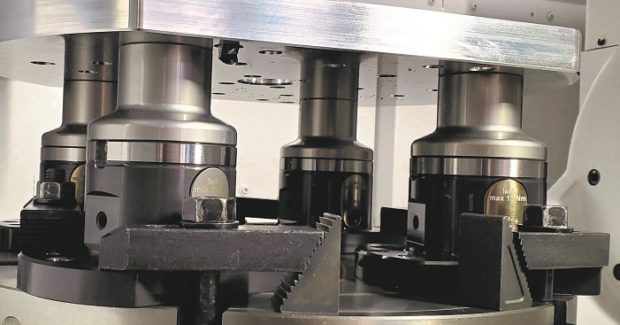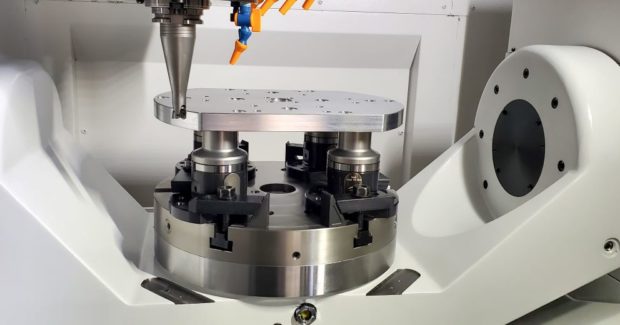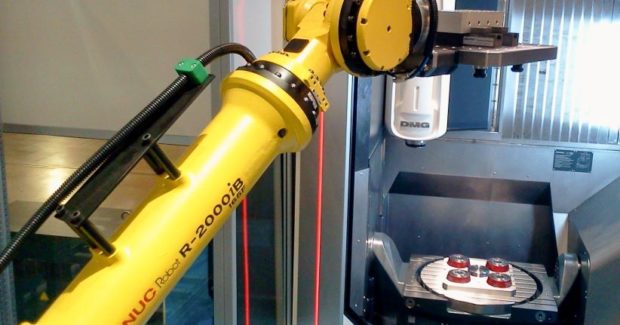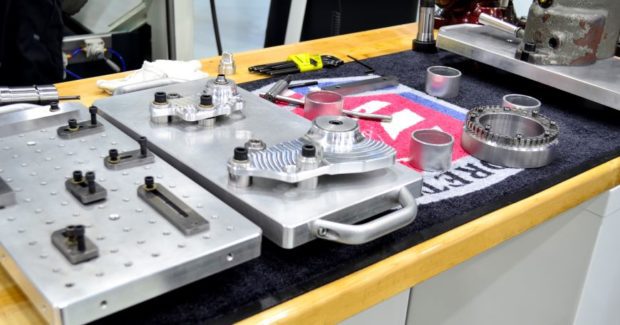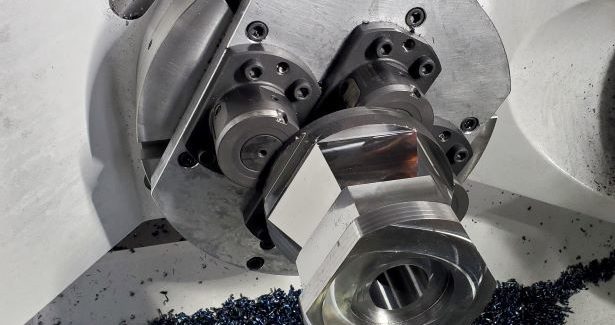Six Things You Need To Know Before Choosing Workholding Devices
Workholding should be more than an afterthought; however, there are steps to follow and understand before selecting new devices.
Posted: September 15, 2021
DEPTH OF CUT
By John Zaya
When it comes to securely and accurately situating material on a machine table, there’s often more than one way to get the job done. Are they all as precise or productive? Probably not, but they’ll get the part to the next step of the process. Everything will seem to be running as planned, but over time a scrap part here, or slow down there, and the cost of taking the easier or cheaper route adds up.
That said, if you get into a situation where you know the part can’t be made with any of the fixtures around the shop, or production rates just aren’t keeping up, there are fundamental factors to understand before setting out to find a new device. These will vary in importance from shop to shop and some will be easier than others to assess. Understand the six points outlined below about the job, and we promise you’ll find the best workholding device for any project.
1. Part Size
Two of the most important factors of a good workholding setup are stability and access. Both have a direct connection to right-size workholding and finding a balance between the two is needed. The fixture may be large and provide rigid holding but increases the chances of access to the workpiece being limited — and vice versa.
- If a part is too small for your fixture, consider palletizing multiple parts.
- If a part is too big for your fixture, consider upgrades if what you have is modular, or add custom pieces, if possible.
2. Part Shape and Condition
Choosing workholding that accommodates the shape of your part really comes down to whether it’s round or prismatic (has flat sides). If the parts are prismatic, most often a vise will do just fine. If the part is round, you’ll need to hold onto an outer or inner diameter on the part. This may require a collet chuck, lathe chuck or V-blocks, if it needs to go into the mill and so on.
Knowing if what’s coming through will be raw material, a casting or partially finished parts, will also indicate what the workholding will have to accommodate. For example, a round raw bar from the mill may have an OD tolerance of ±.005″, but if a part is cast, then the size may be ±.02″ — could be better, could be worse. If a part has already been machined, then the size is not a variable, it’s a known controlled value.
3. Number of Axes
Prismatic parts often require multiple machining axes. This introduces a different set of workholding considerations. For multi-axis machining, especially 5-axis, the workpiece needs to be secured in a way that provides clearance for movements without creating interference areas that will ultimately crash the machine. The most common interference areas occur between the table and the spindle housing of the machine. This is generally caused by the need to have a wide angle of attack to the workpiece from the spindle to the table.
Elevating the workpiece with something like a riser chuck provides machining access and allows for the use of shorter tooling, resulting in better cutting parameters, faster feed rates and heavier depths of cut. Form and positional tolerances are also improved when multiple faces of a large workpiece are machined in one setup. Similarly, a quick-change workholding component can be directly attached to the underside of workpieces that need to be held without any side restrictions.
4. Production and Mix Levels
The frequency and complexity of part changeover should impact how fast you need your workholding to be. Generally speaking, the higher the part mix and/or production level, the more changeovers. Seriously consider how much time a certain piece of workholding will require during locating and clamping.
We find that it’s not typically until the setup cost reaches a tipping point, generally 20-to-25 percent of the total cost to manufacture a part, i.e., hours/day and minutes/fixture, that we see customers inquiring about a change. That’s a long time to wait and a great deal of efficiency to lose. In any case, a zero-point workholding solution that maintains impeccable accuracies and strength while allowing for extreme modularity and quick changing of fixtures/parts.
5. Level of Operator Interaction
While we often think of robots or assembly lines when we think automation, when it comes to workholding, the focus is largely on the ability to clamp and unclamp the part or fixture repeatably and accurately, typically with the help of air or hydraulics. There are three levels of automation for consideration in workholding:
- Fully automatic – All loading/unloading of parts and/or fixtures is done automatically including the clamping of the systems
- Partially manual/automatic – A mixture of manual loading and automatic clamping
- Fully manual – All setup and clamping done by a person
How automated is your loading, unloading, clamping, etc.? Or, what investments are planned for your shop’s automation, and will any of it be for machining? Workholding is a key consideration if any automation is in the works. If not, you’ll still need an understanding of who will be handling workholding, how many people, experience level etc., to choose correctly.
If you want to avoid clamping and unclamping by hand, multiple people fussing with part fixturing and relocation, automation chucks open and close with the flip of a switch. A single operator can recognize if a part is locked and ready to machine or unlocked and ready to move without having to make multiple touches or ask for assistance. This is done with electrical or pneumatic proximity switches that signal if the chuck is “closed,” making the part safe to machine; or “open,” making it safe to remove the part/fixture.
6. Options and Accessories
If you’re after a very specific job or have unique demands, you may have to look beyond the core workholding system to the options and add-ons. In some cases, this can dictate your choice altogether.
With UNILOCK, for example, chuck design goes far beyond the standard sizes and shapes. Chucks can sit on top of tables, they can be incorporated into tombstones/tables/plates, into EDM machines, CMMs or robot interfaces. If rough, high-torque machining is in order, something like the Turbo option, which can multiply clamping forces from a few hundred pounds to several thousand, may be required.
In another scenario, heavy or elaborate parts are often difficult to handle. Guide Pins and Lockout options prevent misloads and damage by helping to ensure the part is fixtured in a controlled and accurate way. This dramatically reduces the risk of damaging workholding or the material itself.
Speaking of preserving investments, if easy maintenance is a high priority, chip fans are great, but the workholding itself can actually help as well. UNILOCK chucks are a mechanical device all their own. With the Air Blast option, a modification is made to the back cover of the chuck that allows air to clean the knob as it enters the chuck, reducing labor and maintenance intervals.
Workholding should be more than an afterthought. Don’t assume that what is on the machine or around the shop will get the job done. Carefully chosen workholding can unlock efficiency before, during and after actual chips are being made. Look at the work you do, your machinery and your team, and choose the workholding that helps boost your performance.



